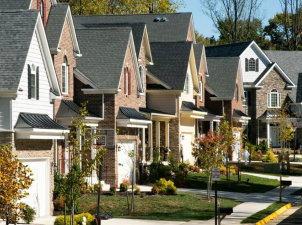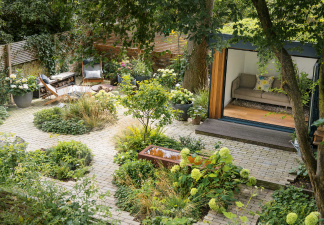How Different Are Suburban Homes in the US and Europe?
Amid the diverse landscape of global urban development, the United States' residential suburbanization stands out as a profound experiment in urban transformation. Embodied in the 1920s, this model evolved over decades, profoundly reshaping the spatial layout and lifestyle of American cities.
It is not only a significant stage in urban development, but has also become a focus of research and study in numerous countries exploring urbanization, providing a classic example for understanding the dynamic relationship between urban expansion, population migration, and regional development. So, what are the differences between American and European suburbs?
European Suburban Housing
European suburban housing exhibits diverse characteristics in terms of architectural style, functional design, and social significance. The following are some typical examples:
- Social Housing in the Parisian Suburbs
Historical Background: To address housing shortages after World War II, France built a large number of social housing projects, such as the "Tour Nuage" in Nanterre and the "Cité de l'Étoile" in Ivry. These projects were originally intended to provide affordable housing for workers and immigrants. However, over time, some areas fell into decline due to inadequate maintenance and changing social structures. Architectural Features: Adopting a modernist style, it emphasizes functionality and high-density layouts. Some buildings, such as the "Cloud Building," have become landmarks with their colorful walls and unique shapes. However, their enclosed spaces and high crime rates have gradually marginalized them.

- Villa Müller in the Prague Suburbs
Design Concept: Designed by Austrian architect Adolf Loos, this residence is a representative example of Raumplan. Breaking with traditional floor plans, the residence creates a rich spatial hierarchy through the combination of rooms at varying heights, emphasizing the unity of function and form.
Spatial Experience: The low entrance porch contrasts with the spacious living room, a spiral staircase connects the different levels, and each room has a unique view, reflecting Loos's philosophy of "decoration is sin" and his pursuit of a simple and practical architectural aesthetic.
- Other European Suburban Residences
Modern Luxury Lakeside Villas in the UK: Combining natural landscapes with modern design, these villas emphasize the continuity between indoor and outdoor spaces. They often utilize large expanses of glass and open-plan layouts to create a tranquil and comfortable living atmosphere. Centennial Italian villas: Blending classical Baroque style with modern functionality, they retain traditional interior features like carved ceilings and fireplaces while also featuring modern kitchens and bathrooms, embodying a harmonious symbiosis of history and modernity.
These suburban homes are not merely residential spaces; they bear witness to social change and cultural integration, reflecting the urban planning concepts and lifestyles of different European historical periods.
Suburban Homes in the United States
American houses are primarily single-family homes, emphasizing functional zoning and privacy. Typical homes include private kitchens, separate living and dining areas, and many feature dedicated mailboxes, landscaped yards, and hidden garbage storage areas.
Major housing types include single-story bungalows (1-2 bedrooms), multi-story mansions (multiple bedrooms and bathrooms), ranch-style homes (3-4 bedrooms, including a master bedroom and bathroom), townhouses (two-story structures), and apartments (including condominiums and studios). Suburban homes often include private gardens and garages.
Residential patterns show a rural-urban divide: approximately half of Americans choose suburban living, rely on cars for transportation, and use large shopping malls; urban residents rely more on public transportation and live in relatively compact spaces. Most family homes are one- or two-story buildings, with a general emphasis on courtyard landscaping and improved living comfort. Residents frequently share details of their home renovations. This residential lifestyle reflects a desire for private space and personalized living, resulting in an urban-rural landscape where low-density residential areas coexist with high-density urban areas.


